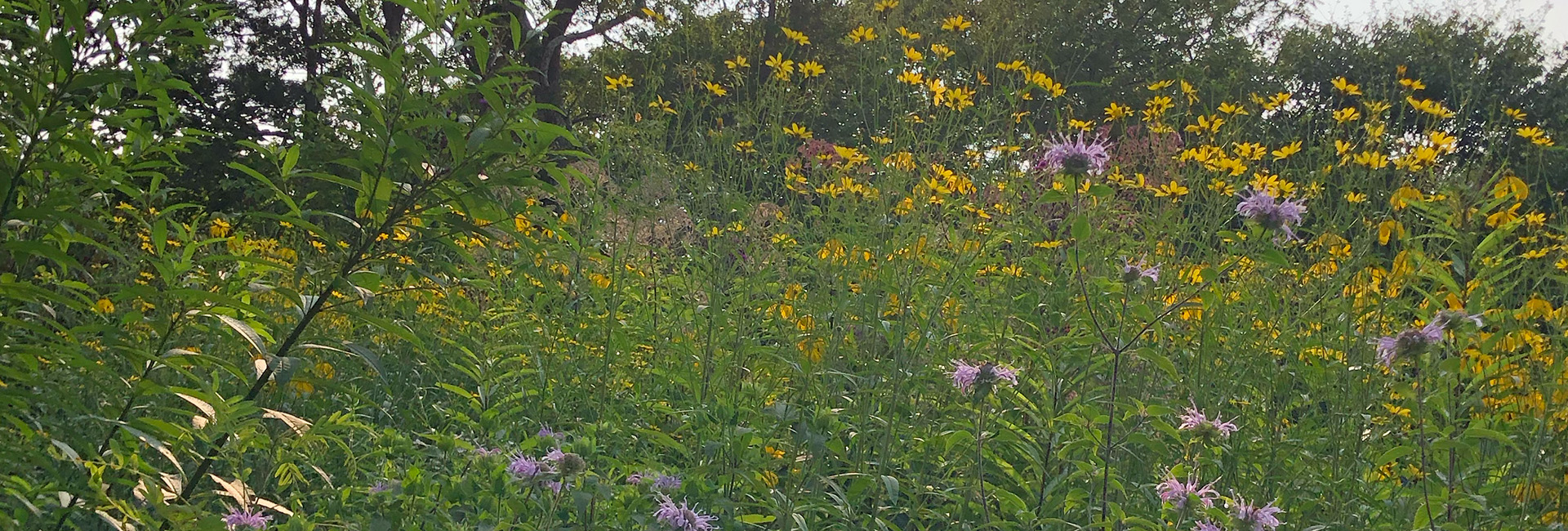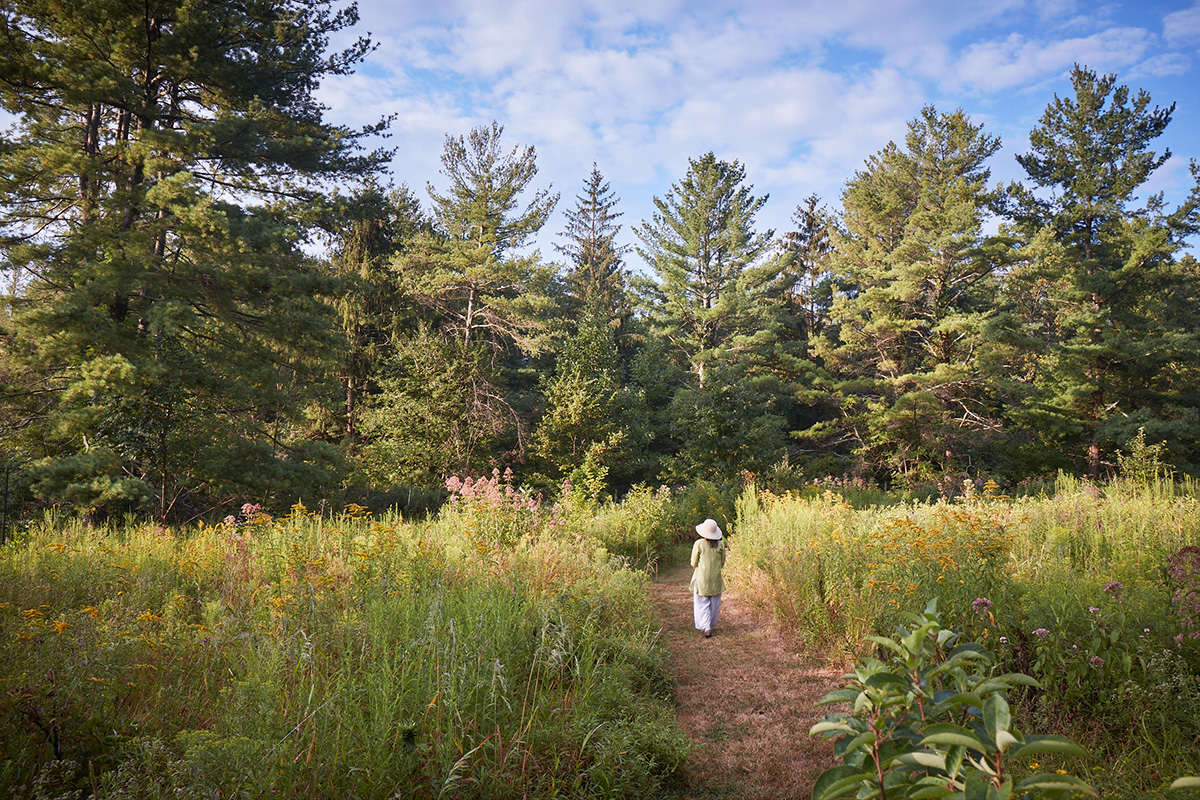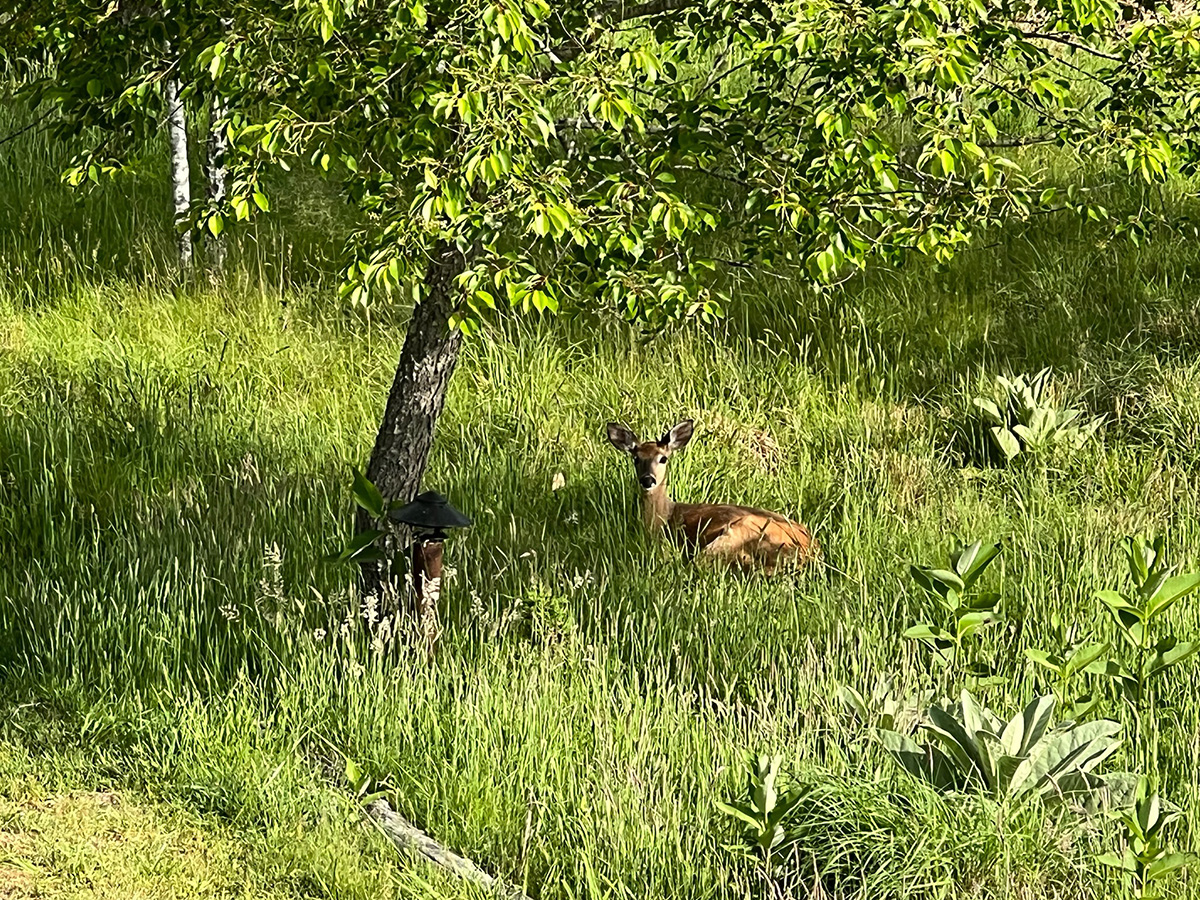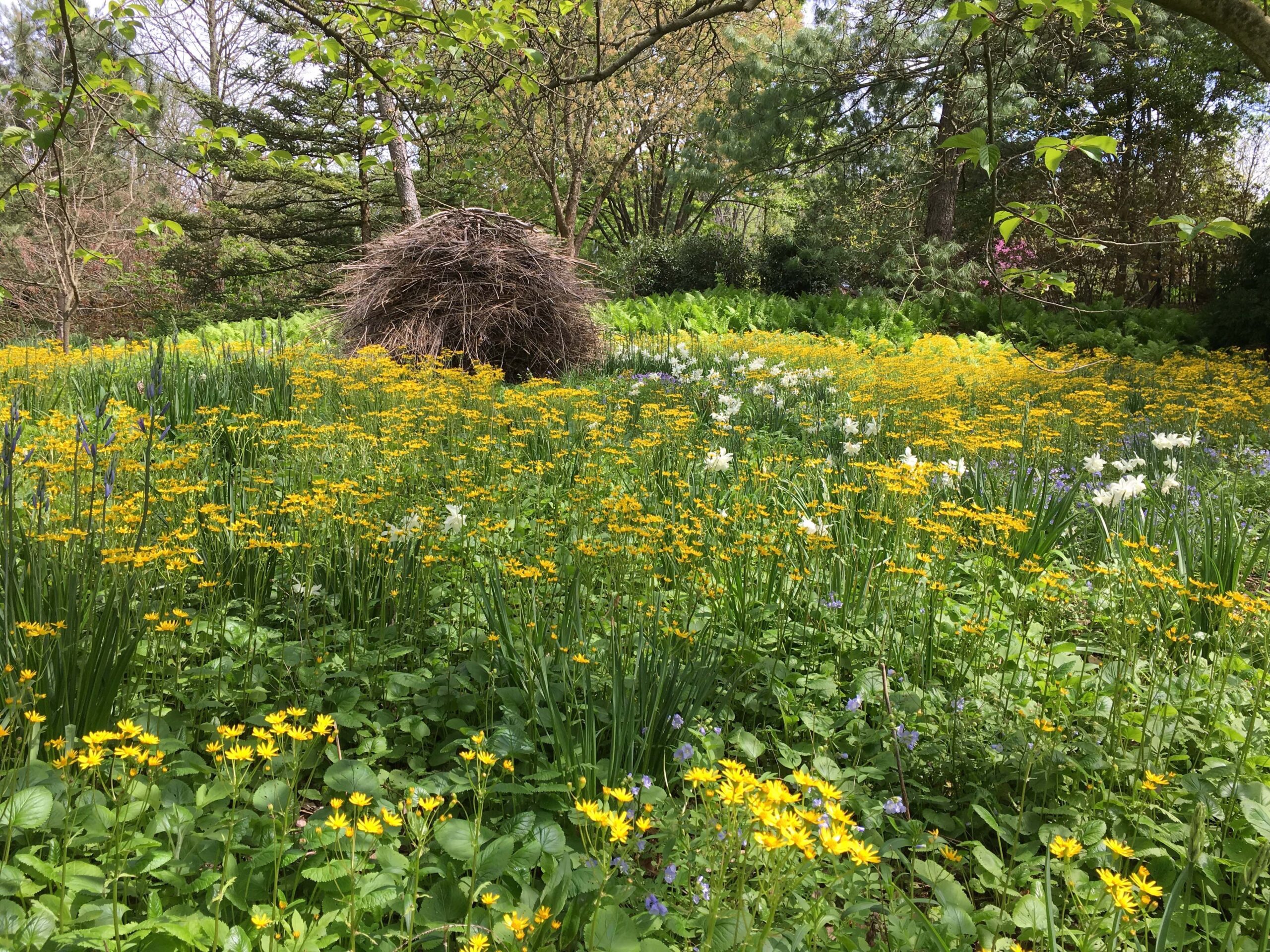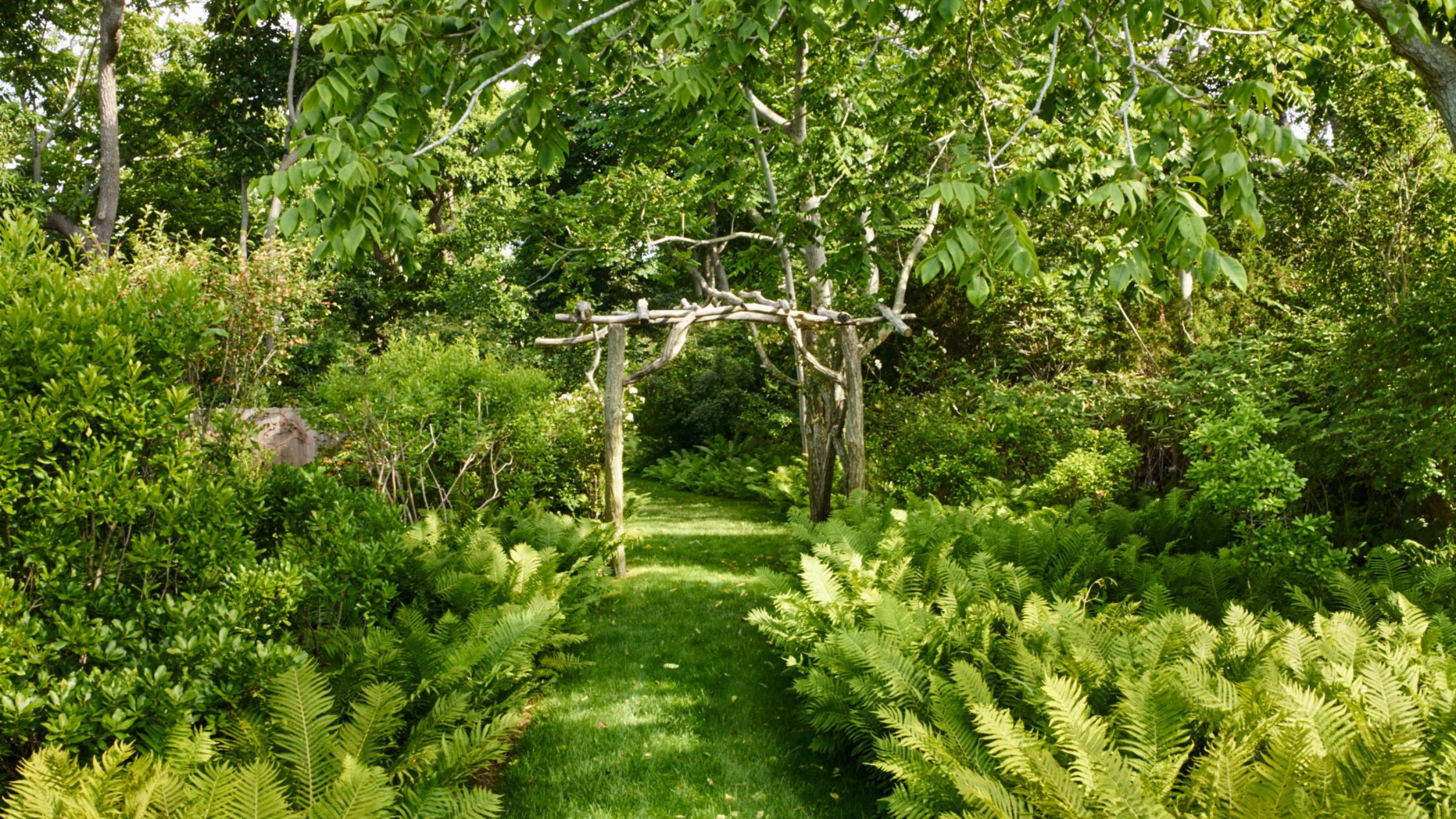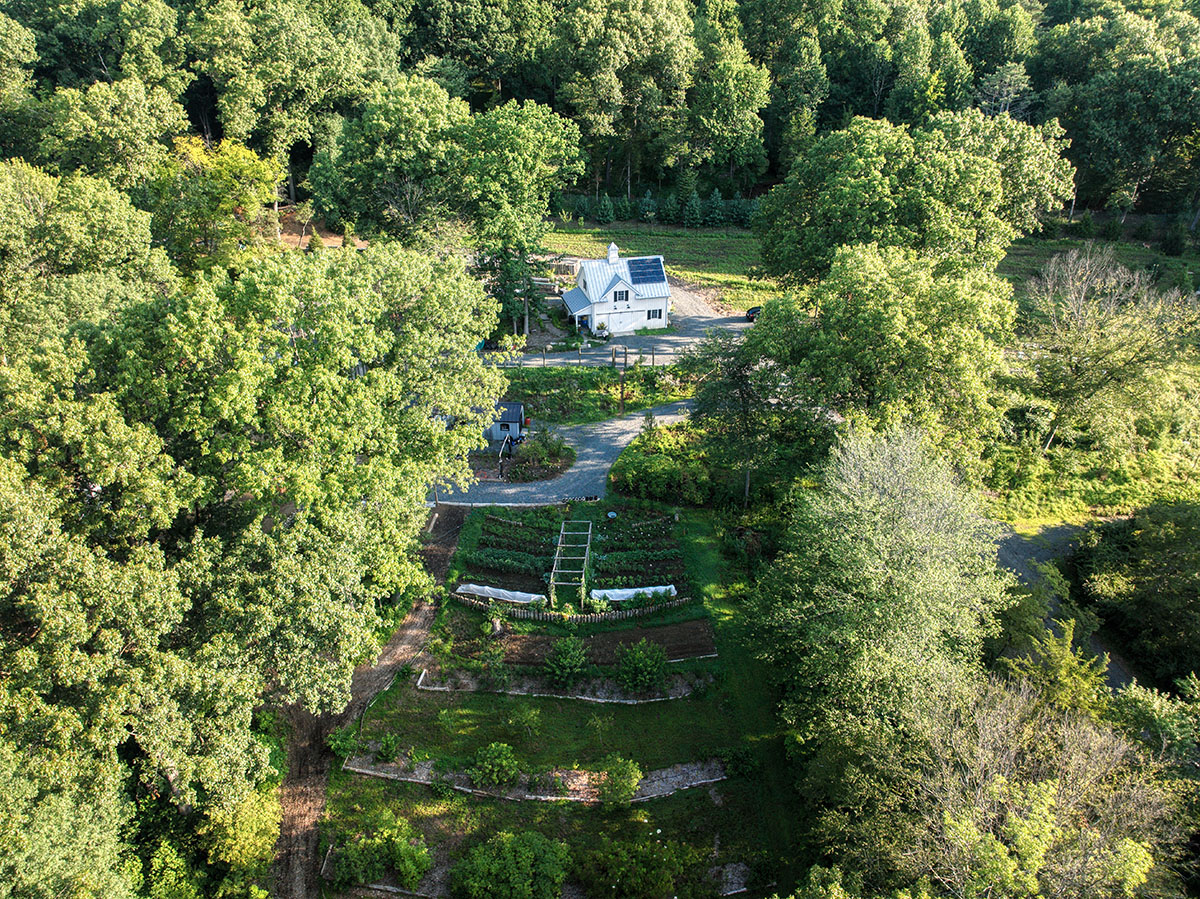
“It really felt like the land called us here,” says Michele Logan of Maranatha, her 73-acre farm in the Somerset Hills of New Jersey that practices and models conservation and stewardship, permaculture, regenerative agroforestry, and water management. From an early age, Logan had a passion for food and nature. “I still remember my grandmother, who had a hobby farm and was an amazing cook, giving me a goose’s egg when I was 10 years old,” she says. “She inspired my love for food and growing food.” The business executive acquired the property in 2015, during a time of personal struggle. She had developed an autoimmune issue, exacerbated by certain foods. Her mother and sister were ill. Healing was needed all around her, and the land seemed to hold a key to that process.”
Conventionally farmed for decades, the property was blanketed with invasive species, both accidental and deliberate, such as the Norway maple trees and privet that had been planted as part of the landscaping years back. The farm, situated on a ridge above the north branch of the Raritan River, also suffered from extensive water and soil erosion, and had been treated with chemicals. “Conventional practices turn soil into dirt,” says Christina Chrobokowa, the ecological landscape designer and founder of 360 Earthworks, who Logan hired to help restore the land. The two of them brought in Johann Rinkens, a farmer and ecological designer, of Fields without Fences, who began applying permaculture ethics and principles (“care for the planet, care for people, redistribution of surplus or fair share,” according to Rinkens) to the restoration project. “It’s a journey,” says Chrobokowa. “You need to read the land, follow the subtle cues, and take a long view.”
Solar panels are hidden by strategic plantings along the ridge. The farm’s proximity to the Raritan River is important. Logan’s “decision not to use chemicals and go with an organic approach to agriculture has an immediate impact on the microbiology and the stream downslope from the farm,” says Rinkens. Maranatha Farm is certified as a River Friendly Farm based on their practices. Photo by Melissa Ozawa
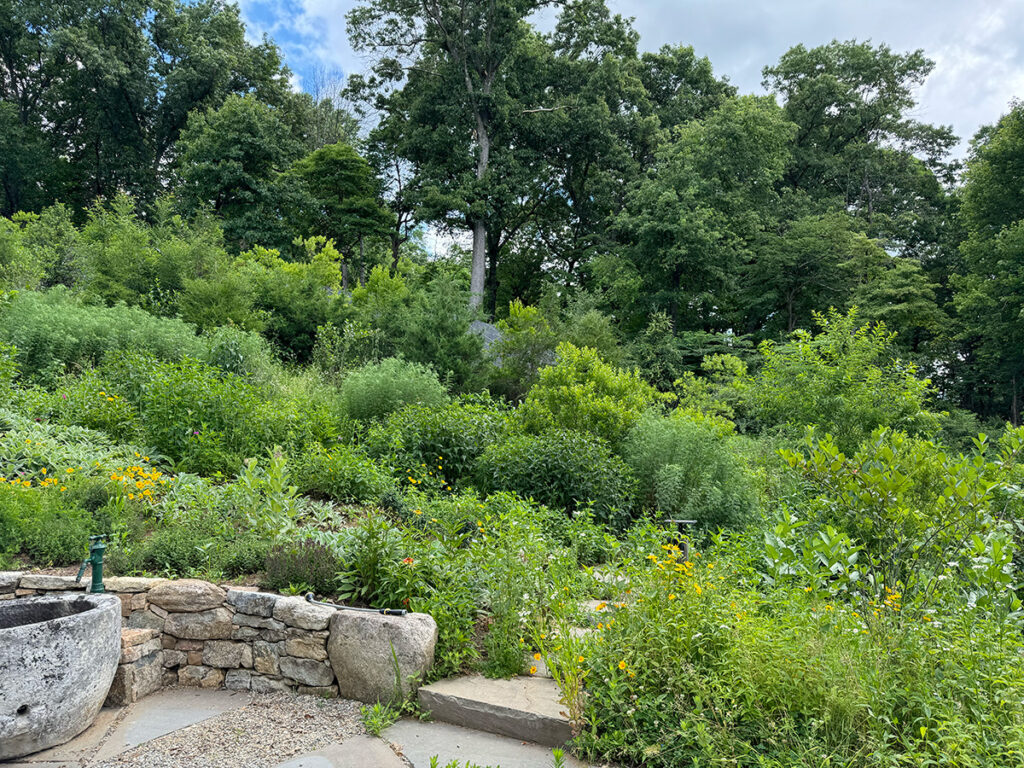
“We let the land lead the design of the farm,” says Logan. To reduce erosion, the team terraced the property, creating an access road to “mitigate and manage the run-off that’s coming down the slope and actually keep it higher in the landscape,” says Rinkens. They also constructed brush dams in gullies and built swales and berms to direct and slow the water. One of the principles of permaculture is to catch and store energy. In addition to solar panels, the team is catching and storing water by “slowing it down, spreading it out through the landscape, and letting it sink in,” says Rinkens. They also moved stones from a fallen wall in a fallow pasture to design dry creek beds to channel the water that’s coming from the ridge above the farm into a spillway that’s designed for what Logan calls the “100-year storm.”
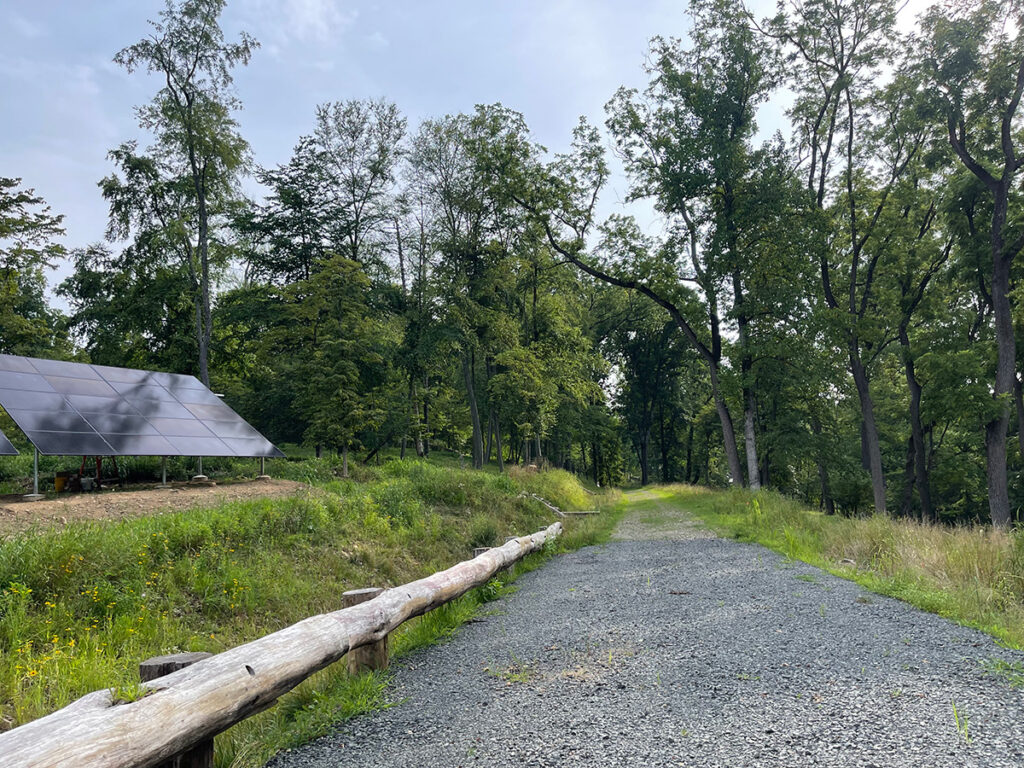
“Water management and the topography led our farm design. Our farm access terrace was engineered with a 2% pitch towards a channel along the length of the road leading to the spillway that has a French mattress [a structure built under the road that lets water pass freely through] to allow stormwater to perk back into the Earth. A detention basin below the spillway further slows water as it heads downslope,” says Logan. Photo courtesy of Marantha Farm.
To promote ecological diversity (another permaculture principle: integrate rather than segregate), they created silvopastures—managed woodlands integrated with trees and herbaceous plants for animals (in this case sheep and chickens) to graze and forage. The trees offer shade for the animals, which is especially important as the days get hotter. “Providing relief from heat lowers stress levels [in livestock] and makes them more productive,” says Rinkens. The team also worked on a custom seed blend that included native grasses and wildflowers, with attention to varieties palatable to sheep. Voracious eaters, the sheep help control the spread of invasives around the property, while their manure fertilizes the fields.
“One of our newly converted silvopastures shows how we created berms from debris,” explains Logan. “The berms will help slow stormwater as the silvopasture gets established with more native savannah and pasture grasses, as well as the native seed bank that was suppressed by invasive plant species.” Photo courtesy of Marantha Farm.
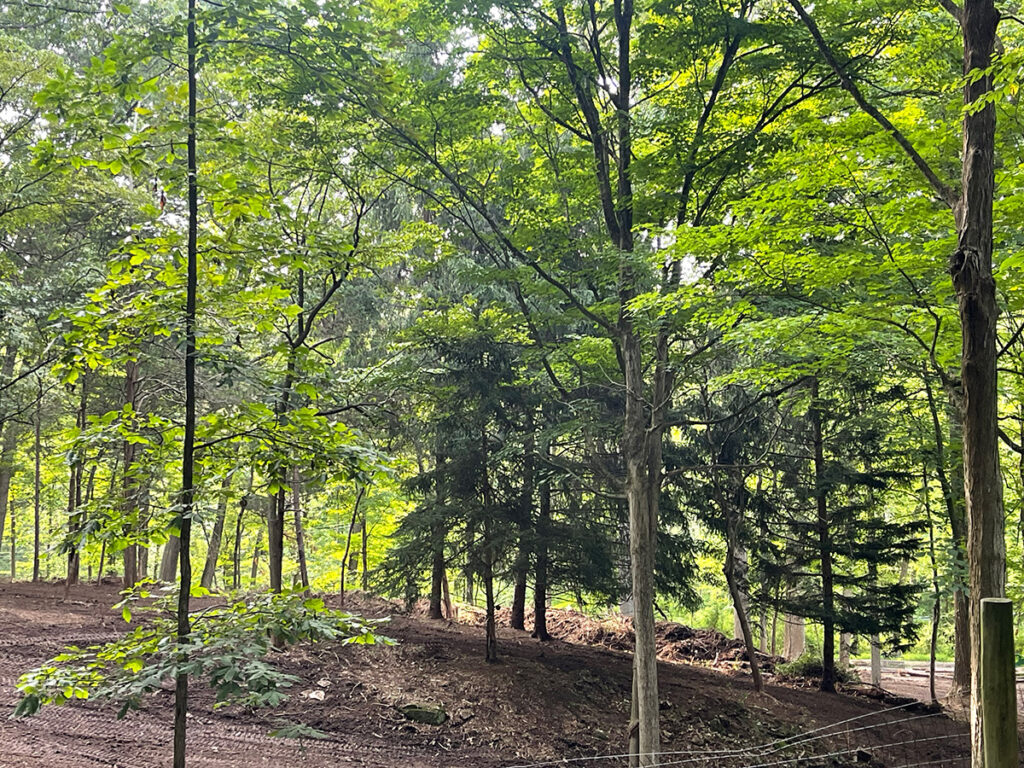

Today the silvopastures are flourishing. Here is a snapshot of one, a year and a half after it was seeded and managed for invasive plant species. Photo by Melissa Ozawa.
Nothing goes to waste here, another permaculture principle. All biomass stays on the property. In addition to composting and leaving snags (dead trees) for wildlife, the team utilizes logs from downed black locust and other trees to help build fencing, steps, bridges, and buildings, including posts for the new sheep barn, since using pressure treated wood isn’t possible because it contains chemicals toxic to livestock. Logs also become fertile media for mushroom inoculation. Branches are woven into habitat piles for birds and animals, and also help reduce erosion.
“Utilizing our foundational principle that ‘no resources leave the farm,’ we created a dry creek bed and detention ponds from a fallen stone wall for water management projects,” says Logan. Photo courtesy of Marantha Farm.
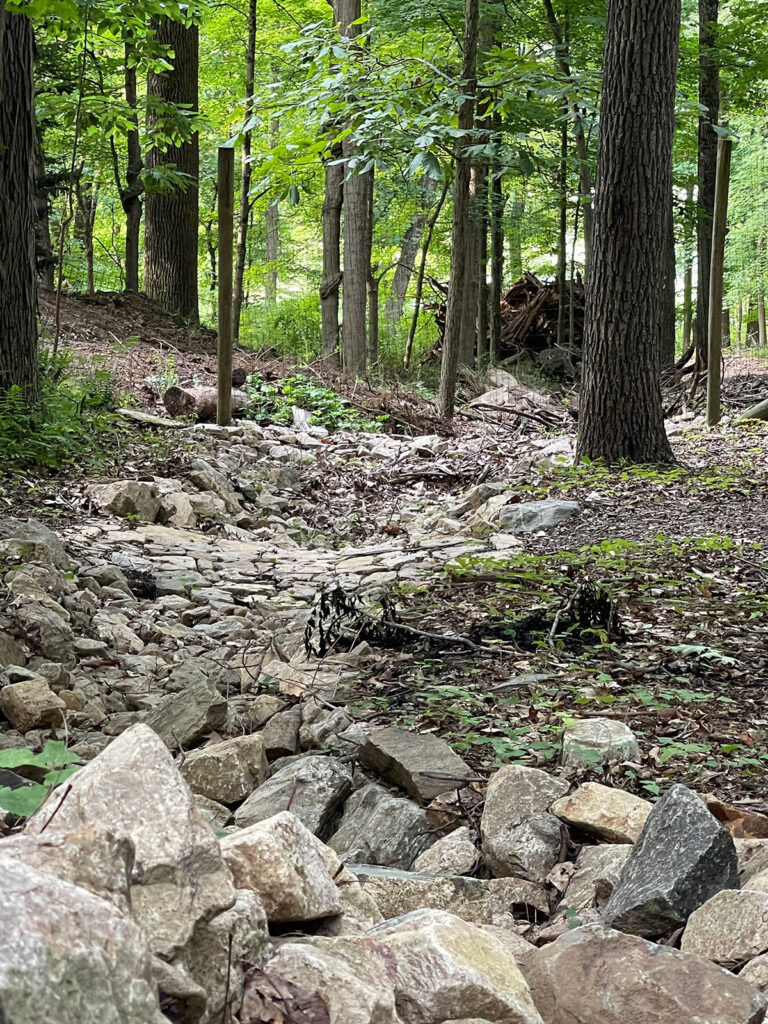
Nearly 10 years later, the farm is a hive of activity (Logan also keeps bees!). Bobcats, coywolves, foxes, snapping turtles and bats share the land with a variety of raptors and songbirds. Flowers—both cultivated and wild—attract pollinators. Ducks, geese, and chickens provide eggs. Logan and her team are busy harvesting vegetables, herbs, berries (blueberries, strawberries, blackberries, raspberries, and currants), and fruits (including native paw paws), and nuts (chestnuts, hazelnuts, walnuts, and hickory) from trees on the farm. In the spring, ramps, watercress, and fiddlehead ferns flourish.
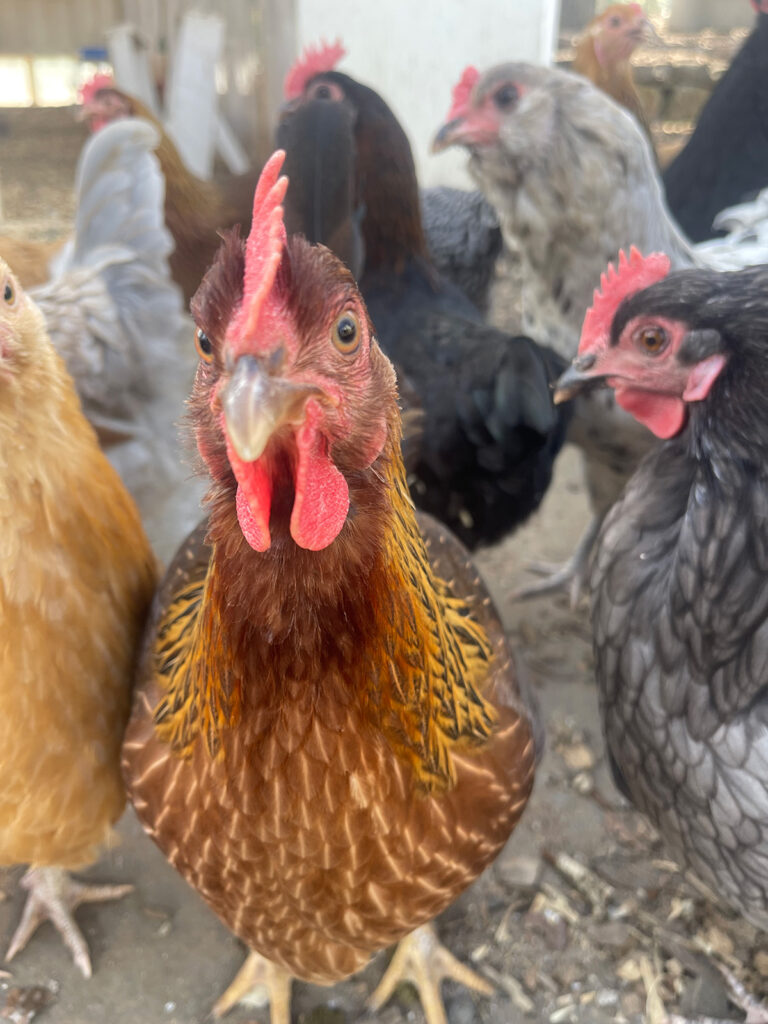
“I call chickens the gateway drug to farming,” Logan says with a laugh. Today, the farm is home to an array of pasture-raised chickens, ducks, geese and an adopted livestock guardian dog named Basil. She calls the flock “tree-range” as they can freely roam in the forest farm. Photo courtesy of Maranatha Farm.
They sell what they grow along with a selection of baked goods (produced with their eggs) and jams online and at the farm store, donating any excess produce and eggs to Elijah’s Promise, a nonprofit that aims to alleviate hunger in nearby New Brunswick. “The farm has really highlighted the circle of life for me: birth, growth, and death. You see it all in a very short amount of time, essentially in one growing season,” says Logan. “If you asked me if I would be a farmer years ago, I would have laughed at you. But I’m so happy to be farming. It’s so fulfilling.”
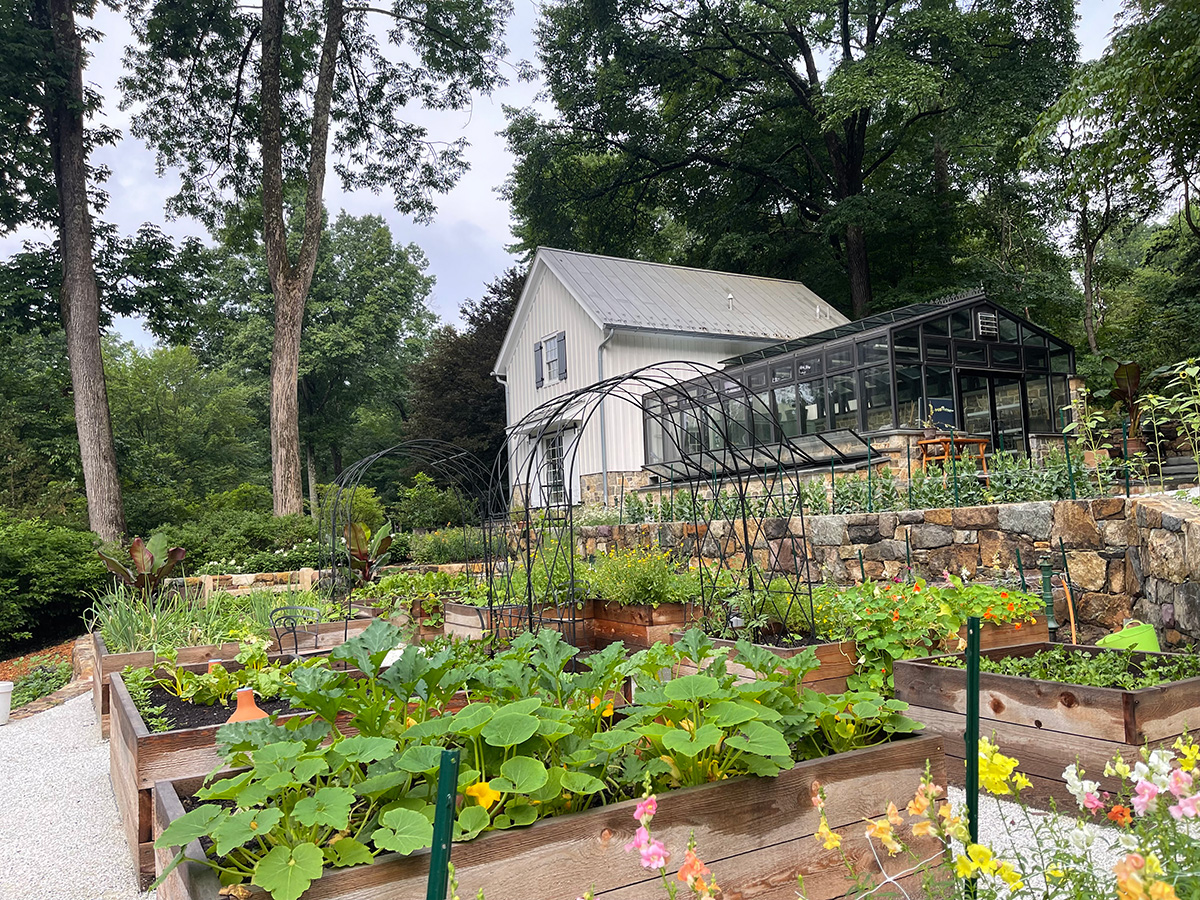
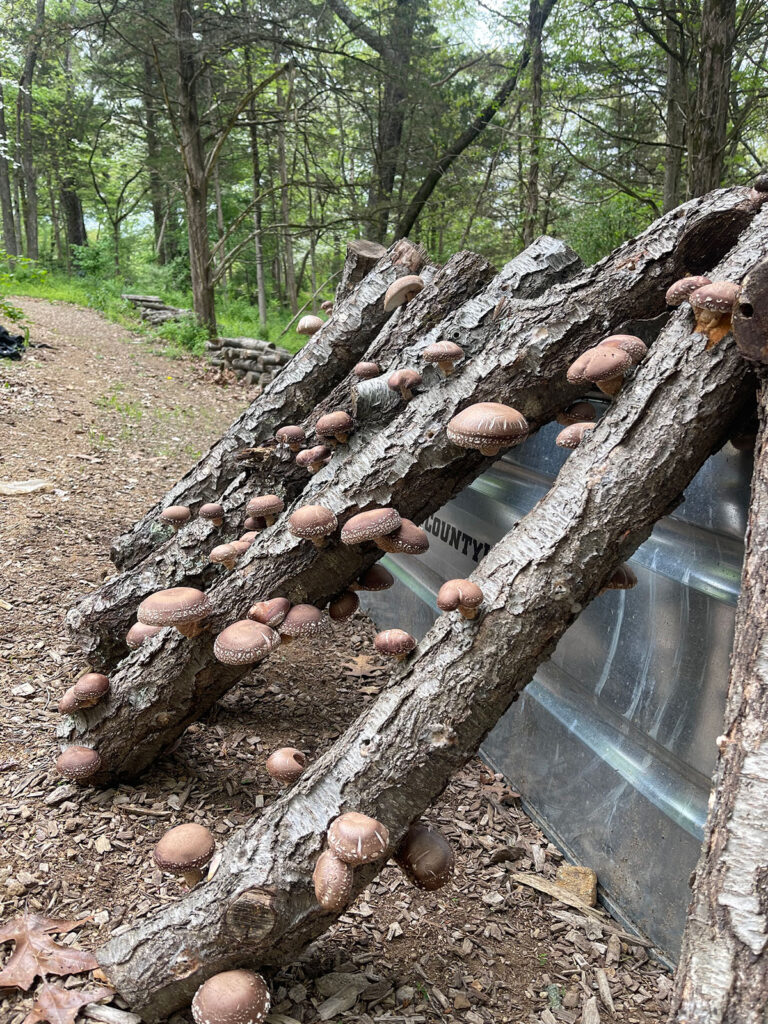
Logan and her team seed mushrooms in logs from the farm. Photo courtesy of Marantha Farm.
Logan is not done yet. Hoping to inspire more farmers to practice regenerative agriculture, she recently bought 47-acres of adjacent land to create The Regenerative Agriculture Incubator at Maranatha Farm. “Our goal is to provide access to beginner and underserved farmers to learn agroforestry and regenerative farming with the opportunity to have a long-term lease there, or on other large private land,” says Logan, who also hopes to create on-farm housing for participants. “It’s about giving back and working collaboratively with animals, each other, and nature.” she says. “I want to be able to feed the community, restore the ecosystem, and teach people. I’m so excited for the future.”
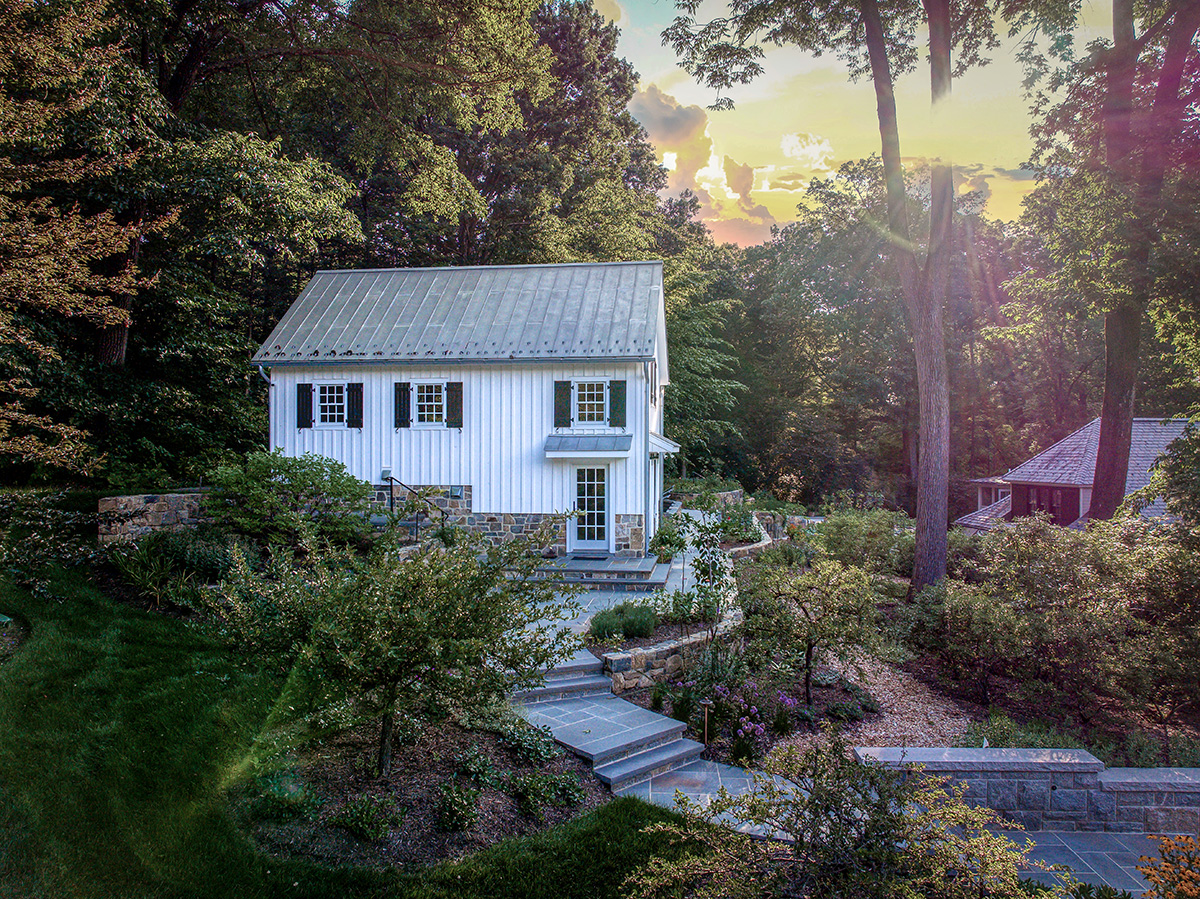
by Melissa Ozawa
This is part of a series with Gardenista, which ran on July 31, 2024.
